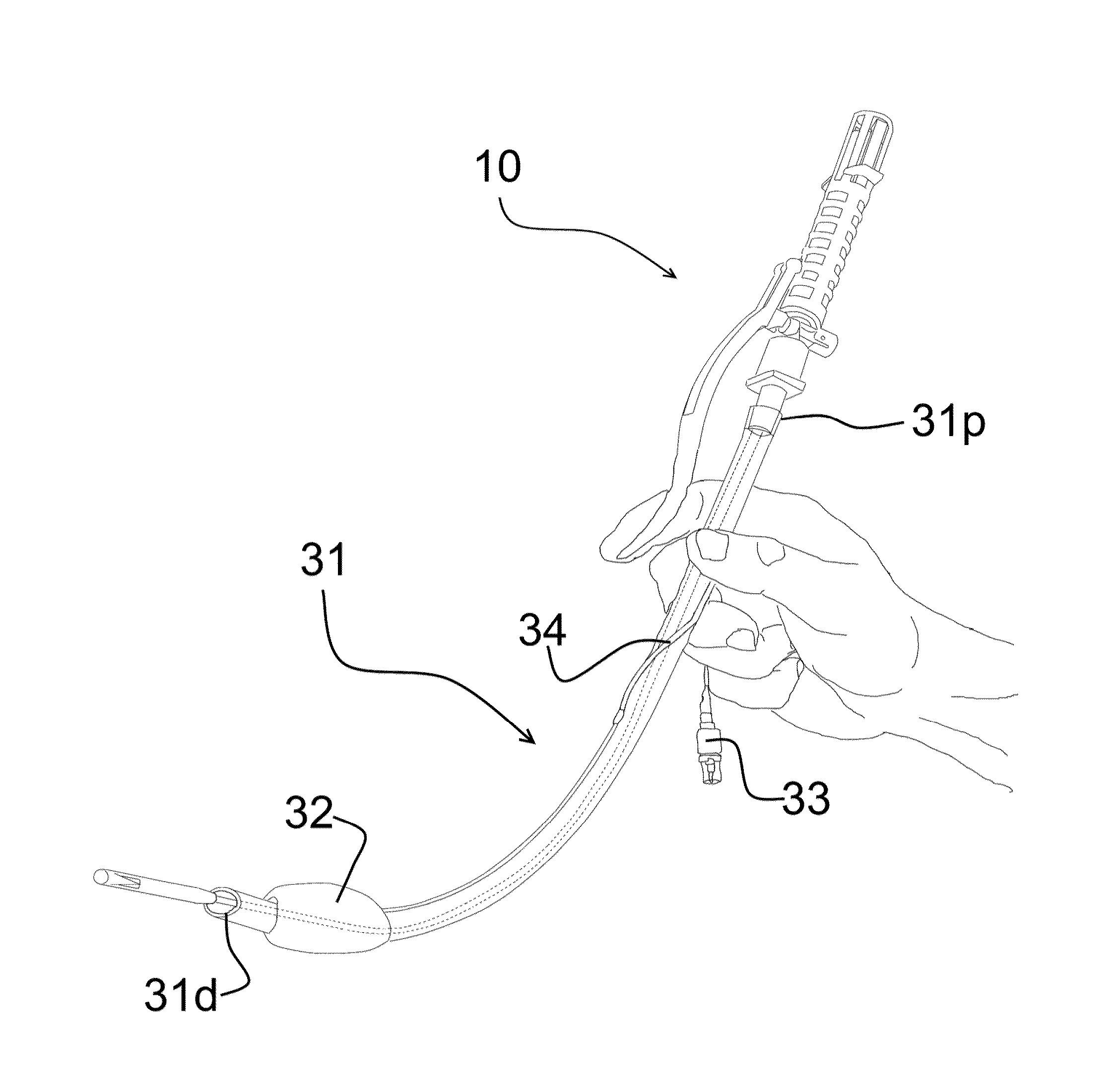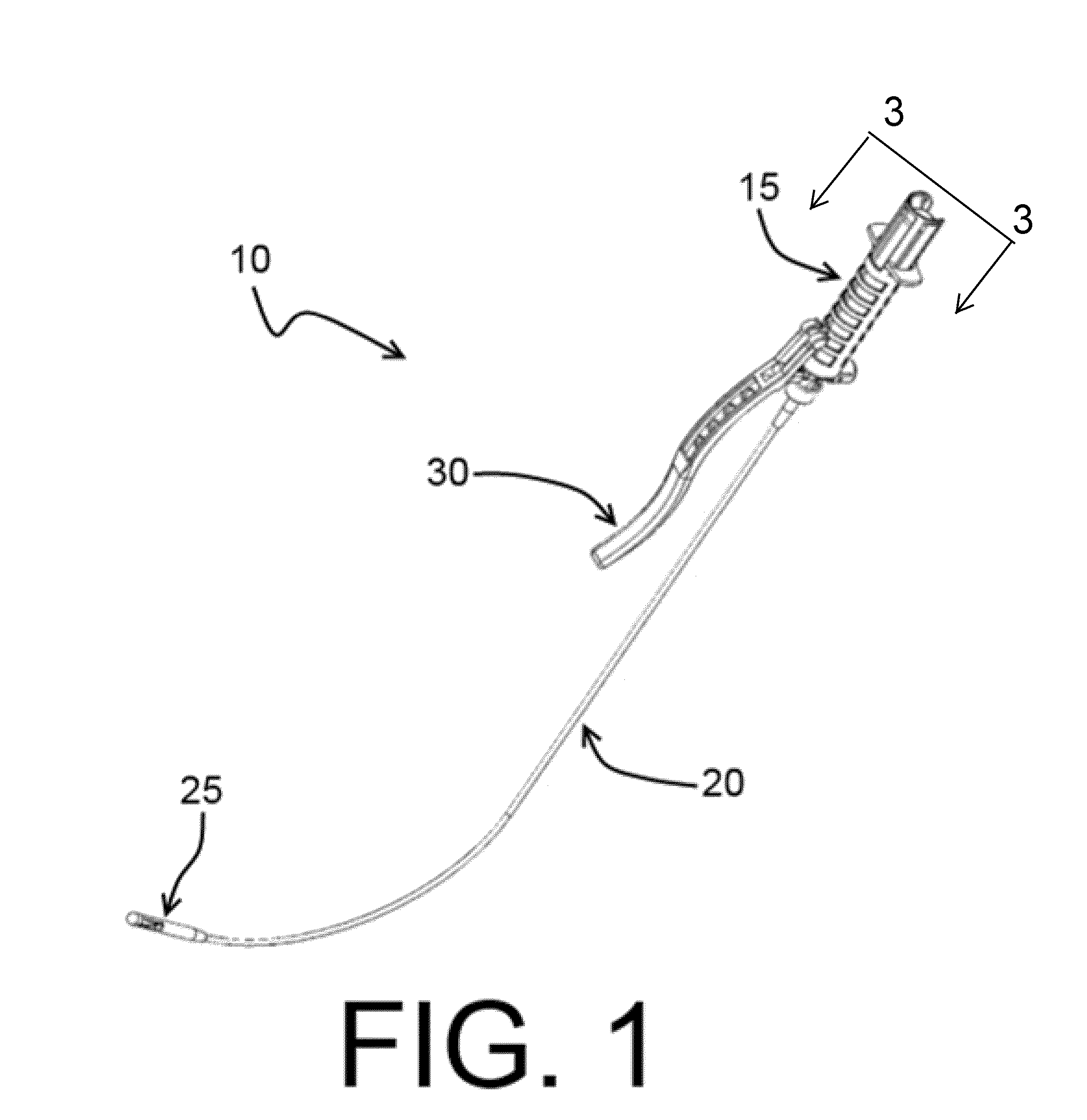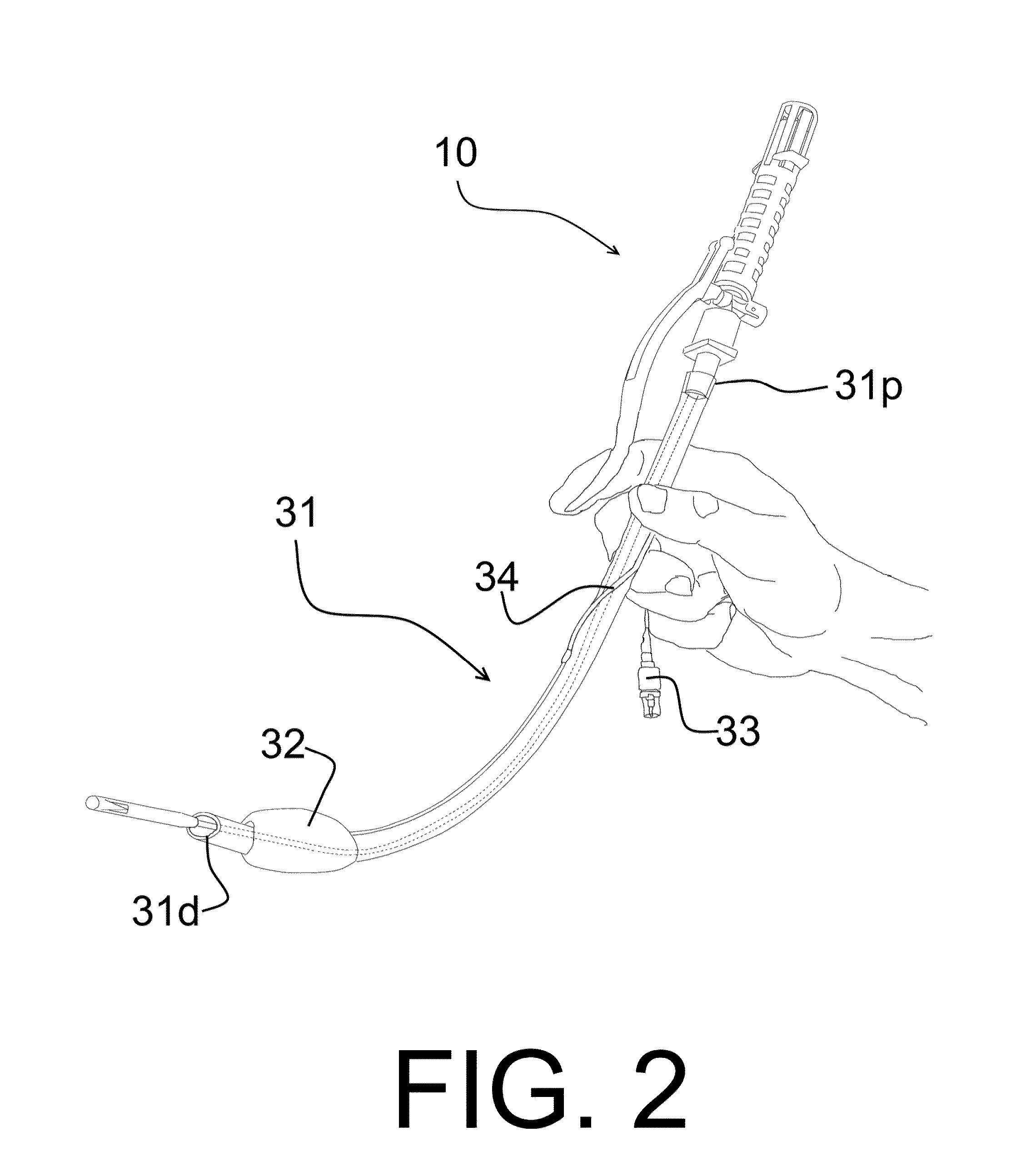Combined laryngo-tracheal anesthetic and stylet device
a combination, tracheal technology, applied in the direction of respirators, process and machine control, instruments, etc., can solve the problems of increasing increasing the risk of complications, so as to reduce the total time involved, avoid the effect of increasing the requisite skill and dexterity of operation, and eliminating the possibility of injury and stress on the patient from repeated procedures
- Summary
- Abstract
- Description
- Claims
- Application Information
AI Technical Summary
Benefits of technology
Problems solved by technology
Method used
Image
Examples
vial embodiment
[0047]The dispenser 15 comes in a variety of embodiments. In each embodiment, the dispenser 15 is adapted to receive a cartridge or ampule of anesthetic. The dispenser 15 releases the contents of the cartridge for dispersion through the conduit 20 and out the nozzle 25 when actuated by the actuation means 30. However, the means for pressurizing the contents and the actuation means varies between the following embodiments.
[0048]In a primary embodiment that can be seen in FIG. 3, the dispenser 15 is comprised of a housing 35 defined by a first (or proximal) end 40, a second end 45, and a longitudinally extending perimeter wall 50. Towards the second end 45 is a flat substrate 55. Extending proximally from the flat substrate 55 is a piston 60. The piston can be spring loaded or hydraulically-, pneumatically-, or electrically-actuated. Various embodiments of the piston are discussed in greater detail infra. In a preferred embodiment, the piston 60 is spring loaded. Extending coaxial wit...
embodiment
Syringe Embodiment
[0063]In a second embodiment of the present invention depicted in FIGS. 7A-7D, the dispenser 15 works in combination with a syringe 102. In some configurations of the second embodiment, a reservoir 100 is utilized to pressurize the fluid in the syringe 102. In other configurations, the syringe 102 is pressurized, either internally or externally, and connected directly to a pressure release valve 104 (as shown in FIG. 8A).
[0064]In configurations using a reservoir 100, the reservoir 100 is adapted to receive the syringe of anesthetic as depicted in FIG. 7A such that the reservoir is positioned between the syringe and the stylet 20. The reservoir defines a cavity which is isolated from the ambient environment. The syringe 102 is a typical one in that it comprises a barrel 105, a plunger 110 slidably received by one end of the barrel, and a tip 115 positioned at a second end of the barrel. Some syringe embodiments also feature finger tabs 117, which provide a means to ...
PUM
 Login to View More
Login to View More Abstract
Description
Claims
Application Information
 Login to View More
Login to View More - R&D
- Intellectual Property
- Life Sciences
- Materials
- Tech Scout
- Unparalleled Data Quality
- Higher Quality Content
- 60% Fewer Hallucinations
Browse by: Latest US Patents, China's latest patents, Technical Efficacy Thesaurus, Application Domain, Technology Topic, Popular Technical Reports.
© 2025 PatSnap. All rights reserved.Legal|Privacy policy|Modern Slavery Act Transparency Statement|Sitemap|About US| Contact US: help@patsnap.com



